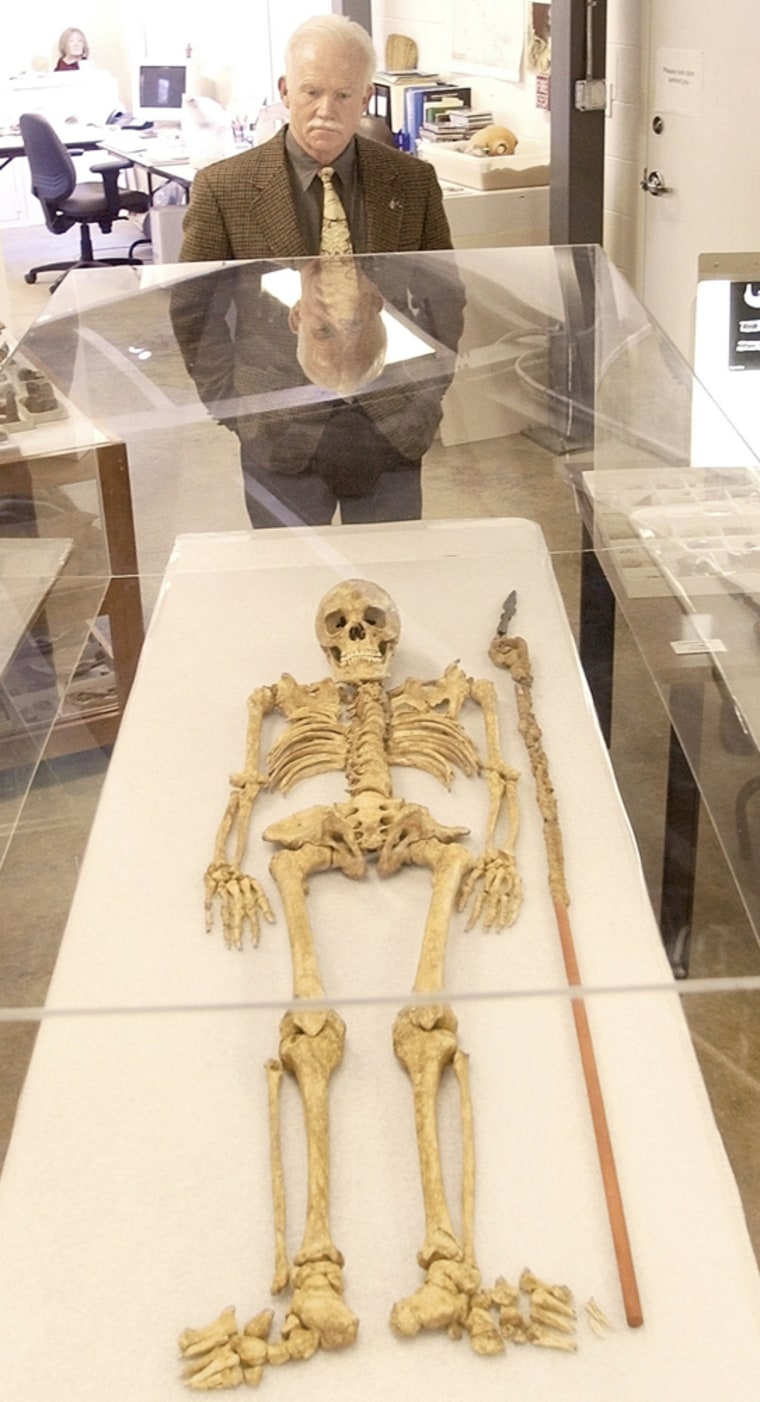Scientists’ hopes that DNA testing would identify a nearly 400-year-old skeleton found at Jamestown have been dashed, but they remain confident that the remains are those of an unsung founder of North America’s first English settlement.
American and British scientists had hoped DNA they believe to be of Bartholomew Gosnold would match with that of a woman buried in England who they had thought was his sister. Tests, however, found the woman wasn’t a blood relative of Gosnold, the nonprofit Association for the Preservation of Virginia Antiquities announced Thursday.
“Was I disappointed? Of course,” said Bill Kelso, the association’s director of archaeology at Jamestown. “A lot of work went into this.”
Kelso remains convinced, however, that researchers have correctly identified Gosnold based on historical, archaeological and forensic evidence.
“It’s all come together,” he said.
Gosnold, a former privateer, discovered and named Massachusetts’ Cape Cod and Martha’s Vineyard in 1602, and captained one of three ships that carried settlers from England to Virginia in 1607. He died three months later, at age 36.
Historians, who relied on written accounts of Jamestown’s founding from Capt. John Smith and other settlers, largely overlooked Gosnold. Smith, however, described him as “the prime mover behind the settlement.”
A nearly intact skeleton of a European man in his mid- to late 30s was found in 2002 near the site of the Jamestown fort. Evidence such as a coffin — usually reserved at the time for people of higher status — and a decorative captain’s staff on its lid have led researchers to believe the remains are Gosnold’s.
“We have never found any other ceremonial objects in Jamestown burials, so we know this was someone very special,” Kelso said.
In June, researchers led by Kelso took a bone sample from an unmarked grave under the floor of a church in Shelley, England, that had been thought to be the likely location of the remains of Gosnold’s sister Elizabeth Gosnold Tilney. It was the first time the Church of England had authorized such research for scientific purposes.
Microscopic analysis, however, found that the woman was about 24 years too young to be Gosnold’s sister, said Douglas Owsley, a forensic anthropologist at the Smithsonian Institution Museum of Natural History who oversaw testing of the sample.
Owsley said that although records indicate Gosnold’s sister is buried in the church, researchers can’t go tearing up the floor to find her.
“We walked over her,” Owsley said. “She’s there.”
Attempts to find the remains of Gosnold’s niece at another church in England were unsuccessful. Scientists working with skeletal remains can trace DNA only through maternal relatives.
Discoveries continue, however, as Jamestown nears its 400th anniversary. Archaeologists announced Thursday that they had found the remains of the final section of the original 1607 walls of James Fort.
